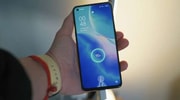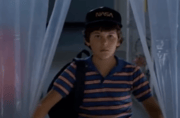What’s happening in Los Angeles? National Guard arrival raises big questions
- Replies 0
If you’ve been watching the news or scrolling through your phone lately, you’ve probably seen some dramatic images out of Los Angeles: National Guard troops in camouflage, armored vehicles rumbling through city streets, and clouds of tear gas drifting over crowds of protesters.
It’s a scene that feels more like a movie than real life, but for Angelenos, it’s become the new reality in the wake of a controversial wave of immigration raids and a federal response that’s left the city—and the nation—deeply divided.
So, what’s really going on in Los Angeles? Why did the National Guard roll into town, and what does it mean for the people who call this city home?
A Flashpoint in the Immigration Debate
California National Guard troops were deployed to Los Angeles on Sunday as a visible show of force following sporadic clashes between immigration agents and demonstrators, highlighting a growing political rift between California leaders and the Trump administration.
President Trump’s order to activate nearly 2,000 guardsmen marked the first presidential deployment of a state’s National Guard without that state’s governor requesting it since 1965.
The decision drew swift condemnation from California officials, including Governor Gavin Newsom, who criticized it as being “not to meet an unmet need, but to manufacture a crisis.”
In a formal letter sent Sunday afternoon, Newsom’s office called on the administration to rescind the deployment.
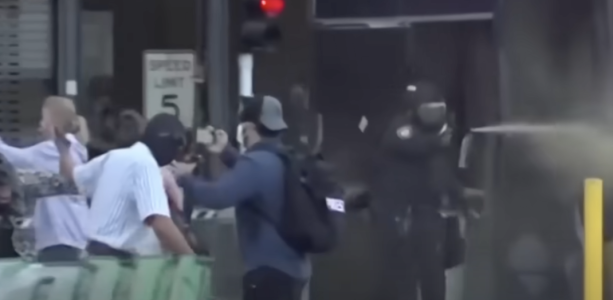
“There is currently no need for the National Guard to be deployed in Los Angeles, and to do so in this unlawful manner and for such a lengthy period is a serious breach of state sovereignty that seems intentionally designed to inflame the situation, while simultaneously depriving the state from deploying these personnel and resources where they are truly required,” the letter read.
A City Pushes Back
Later that day, tensions rose near a federal detention center in downtown Los Angeles, where officers fired tear gas and less-lethal rounds at demonstrators.
At around 4 pm, a large group of protesters took over the southbound 101 Freeway, leading to a tense standoff with law enforcement under the Los Angeles Street bridge.
Despite the unrest in some locations, other previously volatile areas like Compton, Paramount, and the Garment District remained quiet.
Also read: $5.4 million drug settlement opens claims for eligible payers in 29 states
Scenes from the Streets
As of Sunday afternoon, the exact number of troops deployed to LA was still unknown, although the National Guard’s 79th Infantry Brigade Combat Team based in San Diego confirmed that 300 personnel had been deployed to protect federal sites and staff.
The Trump administration cited isolated violent incidents to portray Los Angeles as being out of control.
On social media, Trump wrote that “violent, insurrectionist mobs are swarming and attacking” federal officers and described Los Angeles as “a once great American City” that had “been invaded and occupied by Illegal Aliens and Criminals,” blaming Democrats for the situation.
While officials did not indicate how long immigration enforcement actions would continue, Trump declared on Sunday, “we’re going to have troops everywhere. We’re not going to let this happen to our country.”
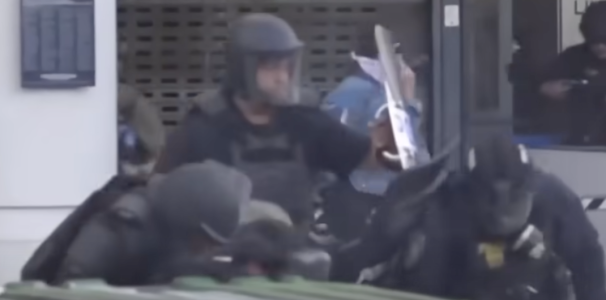
A Community Responds
Many California leaders viewed the deployment as a political maneuver. Mayor Karen Bass condemned it as a “chaotic escalation,” reiterating that “Los Angeles will always stand with everyone who calls our city home.”
Although most protests remained peaceful, there were reports of people throwing objects at officers, setting fires, and vandalizing property.
Immigration and Customs Enforcement reported 118 arrests in the past week, including individuals with prior convictions for drug trafficking, assault, child cruelty, and other offenses.
According to Assistant Secretary for Public Affairs Tricia McLaughlin and pro-Trump Republican officials, the demonstrations were riots meant to “keep rapists, murderers and other violent criminals loose on Los Angeles streets.”
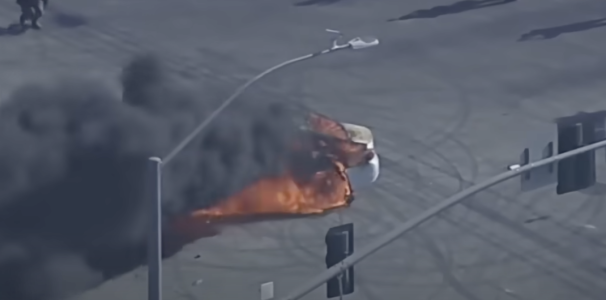
On Sunday morning, Rep. Maxine Waters addressed about two dozen National Guard members outside the Metropolitan Detention Center, where she sought information on David Huerta, president of SEIU California, who had been injured and detained during a Friday raid. “Who are you going to shoot?” she asked. “If you’re going to shoot me, you better shoot straight.”
Tear gas remnants still lingered, and Waters—coughing at times—condemned the troop presence as an unnecessary provocation. She accused Trump of “trying to make an example” out of LA, known as a sanctuary city.
Local resident Leonard Tunstad, 69, biked up to where troops were stationed and questioned their loyalty to a president who, he noted, “had 34 felony convictions.”
He said he felt compelled to speak out because he feared the guardsmen were “indoctrinated against their own citizens.” He added, “This is just a show. This is just a spectacle.”
Also read: ABC News pulls anchor off air after controversial late-night post sparks backlash
A Department of Homeland Security officer cautioned demonstrators near the detention center not to “get political” and asked that they stay on the sidewalk to avoid confrontation.
Nevertheless, DHS and National Guard troops later forcibly moved protesters, using riot shields, rubber pellets, and tear gas to clear a path for federal vehicles.
Among those affected was Jose Longoria, who struggled to breathe after being hit by a tear gas canister. “We’re not armed. We’re just peacefully protesting. They’re acting out,” he said.
Julie Solis, 50, marched up and down Alameda Street waving a Mexican flag and urging calm. She viewed the Guard’s arrival as a provocation. “They want arrests. They want to see us fail. We need to be peaceful. We need to be eloquent,” she said.
Source: MSNBC / Youtube.
A History of Federal Intervention
The last time National Guard troops were called into LA was during the George Floyd protests in 2020—with Governor Newsom’s approval.
Prior to that, the last unrequested deployment by a president happened six decades ago when President Lyndon B. Johnson sent troops to Alabama to protect civil rights marchers.
Former LA Mayor Antonio Villaraigosa condemned the recent deployment, saying it was “meant to incite more fear and chaos in our community.”
He added, “Trump’s military-style mass deportation ICE raids in California have gone too far, tearing families apart and threatening public safety. The raids at stores and workplaces are wrong, just as it’s wrong to separate families with raids at schools, graduations, and churches.”
In Paramount, camouflaged National Guard troops and armored vehicles were seen near a DHS office.
That morning, Jessica Juarez collected used tear gas canisters while helping clean up. “I’m proud of our community, of the strength we showed,” said Juarez, 40. “It’s like they put so much fear into Paramount and for what? These guys didn’t even clean up after themselves.”
The sight of smoke and riot police in Paramount—a city of about 50,000 residents—was jarring. Many residents felt it became ground zero for the federal crackdown.
“What else do you call it but an attack on Paramount and the people who live here?” asked union organizer Alejandro Maldonado.
For some, the clash between the community and the federal government felt like a classic underdog battle. “It really does seem like they wanted to pick a fight with the little guy,” said organizer Ardelia Aldridge.
Read next: Package blackout: USPS temporarily halting Amazon and Walmart deliveries

How do you feel about the National Guard’s presence in Los Angeles? Have you or your loved ones been affected by the recent raids or protests? Share your thoughts, stories, and questions in the comments below!
It’s a scene that feels more like a movie than real life, but for Angelenos, it’s become the new reality in the wake of a controversial wave of immigration raids and a federal response that’s left the city—and the nation—deeply divided.
So, what’s really going on in Los Angeles? Why did the National Guard roll into town, and what does it mean for the people who call this city home?
A Flashpoint in the Immigration Debate
California National Guard troops were deployed to Los Angeles on Sunday as a visible show of force following sporadic clashes between immigration agents and demonstrators, highlighting a growing political rift between California leaders and the Trump administration.
President Trump’s order to activate nearly 2,000 guardsmen marked the first presidential deployment of a state’s National Guard without that state’s governor requesting it since 1965.
The decision drew swift condemnation from California officials, including Governor Gavin Newsom, who criticized it as being “not to meet an unmet need, but to manufacture a crisis.”
In a formal letter sent Sunday afternoon, Newsom’s office called on the administration to rescind the deployment.

The Trump administration deployed nearly 2,000 National Guard troops to Los Angeles without a request from the California governor, sparking strong backlash from state and local officials who called the move an unnecessary escalation. Image source: MSNBC / Youtube.
“There is currently no need for the National Guard to be deployed in Los Angeles, and to do so in this unlawful manner and for such a lengthy period is a serious breach of state sovereignty that seems intentionally designed to inflame the situation, while simultaneously depriving the state from deploying these personnel and resources where they are truly required,” the letter read.
A City Pushes Back
Later that day, tensions rose near a federal detention center in downtown Los Angeles, where officers fired tear gas and less-lethal rounds at demonstrators.
At around 4 pm, a large group of protesters took over the southbound 101 Freeway, leading to a tense standoff with law enforcement under the Los Angeles Street bridge.
Despite the unrest in some locations, other previously volatile areas like Compton, Paramount, and the Garment District remained quiet.
Also read: $5.4 million drug settlement opens claims for eligible payers in 29 states
Scenes from the Streets
As of Sunday afternoon, the exact number of troops deployed to LA was still unknown, although the National Guard’s 79th Infantry Brigade Combat Team based in San Diego confirmed that 300 personnel had been deployed to protect federal sites and staff.
The Trump administration cited isolated violent incidents to portray Los Angeles as being out of control.
On social media, Trump wrote that “violent, insurrectionist mobs are swarming and attacking” federal officers and described Los Angeles as “a once great American City” that had “been invaded and occupied by Illegal Aliens and Criminals,” blaming Democrats for the situation.
While officials did not indicate how long immigration enforcement actions would continue, Trump declared on Sunday, “we’re going to have troops everywhere. We’re not going to let this happen to our country.”

Clashes between protesters and law enforcement included tear gas and less-lethal rounds being used near federal detention centers and on major roads, with a number of injuries reported among both officers and demonstrators. Image source: MSNBC / Youtube.
A Community Responds
Many California leaders viewed the deployment as a political maneuver. Mayor Karen Bass condemned it as a “chaotic escalation,” reiterating that “Los Angeles will always stand with everyone who calls our city home.”
Although most protests remained peaceful, there were reports of people throwing objects at officers, setting fires, and vandalizing property.
Immigration and Customs Enforcement reported 118 arrests in the past week, including individuals with prior convictions for drug trafficking, assault, child cruelty, and other offenses.
According to Assistant Secretary for Public Affairs Tricia McLaughlin and pro-Trump Republican officials, the demonstrations were riots meant to “keep rapists, murderers and other violent criminals loose on Los Angeles streets.”

Many local leaders and community members criticized the federal response as politically motivated and excessive, arguing it was designed to create chaos and justify further aggression against immigrants and sanctuary cities like Los Angeles. Image source: MSNBC / Youtube.
On Sunday morning, Rep. Maxine Waters addressed about two dozen National Guard members outside the Metropolitan Detention Center, where she sought information on David Huerta, president of SEIU California, who had been injured and detained during a Friday raid. “Who are you going to shoot?” she asked. “If you’re going to shoot me, you better shoot straight.”
Tear gas remnants still lingered, and Waters—coughing at times—condemned the troop presence as an unnecessary provocation. She accused Trump of “trying to make an example” out of LA, known as a sanctuary city.
Local resident Leonard Tunstad, 69, biked up to where troops were stationed and questioned their loyalty to a president who, he noted, “had 34 felony convictions.”
He said he felt compelled to speak out because he feared the guardsmen were “indoctrinated against their own citizens.” He added, “This is just a show. This is just a spectacle.”
Also read: ABC News pulls anchor off air after controversial late-night post sparks backlash
A Department of Homeland Security officer cautioned demonstrators near the detention center not to “get political” and asked that they stay on the sidewalk to avoid confrontation.
Nevertheless, DHS and National Guard troops later forcibly moved protesters, using riot shields, rubber pellets, and tear gas to clear a path for federal vehicles.
Among those affected was Jose Longoria, who struggled to breathe after being hit by a tear gas canister. “We’re not armed. We’re just peacefully protesting. They’re acting out,” he said.
Julie Solis, 50, marched up and down Alameda Street waving a Mexican flag and urging calm. She viewed the Guard’s arrival as a provocation. “They want arrests. They want to see us fail. We need to be peaceful. We need to be eloquent,” she said.
Source: MSNBC / Youtube.
A History of Federal Intervention
The last time National Guard troops were called into LA was during the George Floyd protests in 2020—with Governor Newsom’s approval.
Prior to that, the last unrequested deployment by a president happened six decades ago when President Lyndon B. Johnson sent troops to Alabama to protect civil rights marchers.
Former LA Mayor Antonio Villaraigosa condemned the recent deployment, saying it was “meant to incite more fear and chaos in our community.”
He added, “Trump’s military-style mass deportation ICE raids in California have gone too far, tearing families apart and threatening public safety. The raids at stores and workplaces are wrong, just as it’s wrong to separate families with raids at schools, graduations, and churches.”
In Paramount, camouflaged National Guard troops and armored vehicles were seen near a DHS office.
That morning, Jessica Juarez collected used tear gas canisters while helping clean up. “I’m proud of our community, of the strength we showed,” said Juarez, 40. “It’s like they put so much fear into Paramount and for what? These guys didn’t even clean up after themselves.”
The sight of smoke and riot police in Paramount—a city of about 50,000 residents—was jarring. Many residents felt it became ground zero for the federal crackdown.
“What else do you call it but an attack on Paramount and the people who live here?” asked union organizer Alejandro Maldonado.
For some, the clash between the community and the federal government felt like a classic underdog battle. “It really does seem like they wanted to pick a fight with the little guy,” said organizer Ardelia Aldridge.
Read next: Package blackout: USPS temporarily halting Amazon and Walmart deliveries
Key Takeaways
- The Trump administration deployed nearly 2,000 National Guard troops to Los Angeles without a request from the California governor, sparking strong backlash from state and local officials who called the move an unnecessary escalation.
- Clashes between protesters and law enforcement included tear gas and less-lethal rounds being used near federal detention centers and on major roads, with a number of injuries reported among both officers and demonstrators.
- Many local leaders and community members criticized the federal response as politically motivated and excessive, arguing it was designed to create chaos and justify further aggression against immigrants and sanctuary cities like Los Angeles.
- While protests over immigration raids were largely peaceful, isolated incidents of violence were seized on by the Trump administration and its supporters to portray Los Angeles as lawless, further widening the divide between California and federal authorities.
How do you feel about the National Guard’s presence in Los Angeles? Have you or your loved ones been affected by the recent raids or protests? Share your thoughts, stories, and questions in the comments below!




